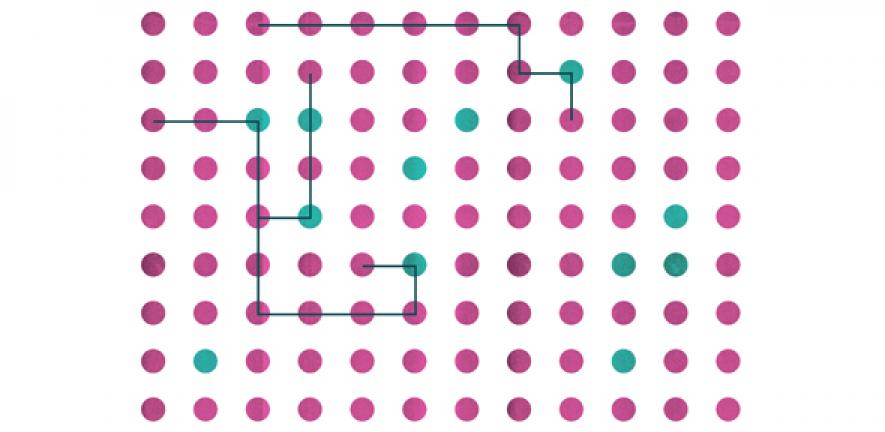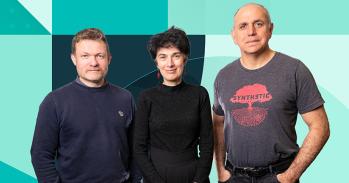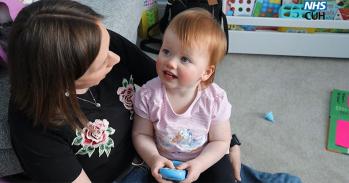
DefiniGEN is one of the first commercial opportunities to arise from Cambridge’s expertise in stem cell research. Here, we look at some of the fundamental research that enables it to supply liver and pancreatic cells for drug screening.
DefiniGEN is one of the first commercial opportunities to arise from Cambridge’s expertise in stem cell research. Here, we look at some of the fundamental research that enables it to supply liver and pancreatic cells for drug screening.
Thanks to IPS cells, we’re now able to discover things that are not possible to do using animal models or any in vitro system
Ludovic Vallier
Much has been written about the promise of stem cells for modern medicine, and cell-based therapies to treat diseases are now being developed by commercial companies in Europe and across the world. But it is their use both to screen medicinal drugs for toxicity and to identify potential new therapies which is increasingly being viewed as one that could have an immediate and far-reaching impact.
Cambridge-based company DefiniGEN supplies the pharmaceutical industry with liver and pancreatic cells that have been reprogrammed from human skin cells. These cells, known as induced pluripotent stem (IPS) cells, are used to test potential new drugs, and can also be used as in vitro models for disease.
The company spun out of the University in 2012 and is one of the first commercial opportunities to arise from Cambridge’s expertise in stem cell research. Its portfolio of products is based on the research of Dr Ludovic Vallier, Professor Roger Pedersen, Dr Tamir Rashid, Dr Nick Hannan and Dr Candy Cho at the Anne McLaren Laboratory for Regenerative Medicine (LRM) in Cambridge.
“Drug failure in the late phase of clinical development is a major challenge to finding new therapeutics which are urgently needed by a broad number of patients with major health-care problems such as diabetes,” said Vallier. “A great deal of time and money are often lost following these false leads, and this limits the capacity of pharmaceutical companies to explore novel therapies. So, identifying toxic drugs as early as possible is vital to the efficiency and safety of the drug discovery process.
“Because we use human cells, our lab has a specific philosophy that all the data we generate is used not only for fundamental research, but also relates back to the clinic,” added Vallier, who holds a joint appointment at the LRM and the Wellcome Trust Sanger Institute, and is also Chief Scientific Officer at DefiniGEN. “We are interested in how stem cells work but we also always ask how the research we’re doing might have a clinical or translational interest.”
IPS cells can be grown outside the body indefinitely, but can also develop into almost any other cell type, providing the opportunity to have a ready source of human cells for testing new drugs. Vallier’s lab is combining basic knowledge in developmental biology and stem cells to develop methods for differentiating IPS cells into liver and pancreatic cells. Despite being generated in a dish, these cells show many of the same characteristics as those generated through natural development.
In particular, the group uses a mix of IPS cells and human embryonic stem (ES) cells to understand the molecular mechanisms that could govern the onset of various metabolic diseases such as those that affect the liver and pancreas.
The liver is a large and complex organ and plays a number of important roles in the body, including digestion and the secretion and production of proteins. It is also the key organ for metabolising drugs and removing toxic substances from the body. For this reason, demonstrating that a drug candidate is not toxic to the liver is a crucial stage in the development of new drugs. It is also a test that most new drug candidates fail – increasing the cost and decreasing the efficiency of the drug development process.
A lack of high-quality human liver cells, or primary hepatocytes, means that inferior models are often used for testing potential new drugs. The cells generated in Vallier’s lab, however, show many of the same functional characteristics as primary hepatocytes, both for toxicology testing and as models of liver disease, including the most commonly inherited metabolic conditions such as familial hypercholesterolaemia and alpha 1-antitrypsin disorder.
Vallier’s team is also able to use these cells to model a diverse range of inherited liver diseases, offering the potential to accelerate the development of new therapies for these conditions. “There is no cure for end-stage liver disease apart from transplantation,” said Vallier. “Due to an acute shortage of donors, many research groups have been looking at alternative means of treating liver failure, including stem-cell-based therapy.”
Understanding the basic mechanisms behind the genesis and development of liver disease is helping his team develop new ways to generate functional liver cells that could be used to treat these conditions in future.
The researchers are taking a similar approach to the pancreas, with a particular focus on diabetes. According to Diabetes UK, 3.2 million people in the UK have been diagnosed with diabetes, and an estimated 630,000 people have the condition, but don’t know it.
A promising therapy to treat type 1 diabetes is transplanting the insulin-producing islet cells of the pancreas, but there are only enough donated islets to treat fewer than 1% of diabetic patients who might benefit from this form of treatment.
Vallier’s group is working to generate large numbers of pancreatic islet cells from stem cells, which could be used for transplantation-based therapy. In addition, they are building in vitro models to study the molecular mechanisms that control pancreatic specification in the embryo. Vallier’s group has identified several genes that could be important for pancreatic development and in determining an individual’s resistance to diabetes.
“Using IPS cells, we’re trying to understand how individual genetics can influence development, insulin production capacity and disease onset,” said Vallier. “Essentially, human IPS cells can be used to model human genetics in a dish, which hasn’t been possible until now.
“Thanks to IPS cells, we’re now able to discover things that are not possible to do using animal models or any in vitro system. Not only will this help us understand more about the mechanisms behind human development, such as how cells in the human embryo develop into organs, but it will also help with drug screening and with making more-precise drugs, which is what’s really needed for the liver and pancreas. These types of in vitro applications are possible now, while cell-based treatments are more in the longer term. But you have to walk before you can run.”
The text in this work is licensed under a Creative Commons Licence. If you use this content on your site please link back to this page. For image rights, please see the credits associated with each individual image.





